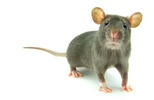 As far as I know there are three types of mouse problem. For two of them, don't call me, I'll be useless. The first type will have me swearing at my PC and the second standing on a chair. The third type is 'joint mice' and those I can sometimes help with! A joint mouse is a little bit of loose debris inside a joint, most commonly the knee. The debris can get trapped between joint surfaces causing irritation which may lead to inflammation and further damage, it may also cause the knee to lock, or indeed to prevent it from fully straightening and therefore cause instability. In teenagers and young adults (especially sporty ones) it can be because the bone grew faster than its blood supply causing it to weaken and fragment. This condition is called osteochondritis dessicans. Because the joint mice may be bony it is important to get these imaged, since they may need to be removed via keyhole surgery in order to prevent them damaging the articular cartilage further. In older patients it is more likely just cartilage that has become torn and dislodged due to a twist or sprain or as the result of osteoarthritic changes. This can still be irritating and over time can cause damage but there is the possibility of encouraging the mouse out from between the joint surfaces and into an area of the joint capsule where it won't cause damage or irritate the joint and will be slowly reabsorbed. My role in this is simple, it is to gently articulate the joint so that whilst the two surfaces are held apart, either gravity causes the mouse to fall out, or I can set up a pumping motion to try and flush it out. This process doesn't work for every patient and it is possible the mouse will find its way back into the joint but for many the joint goes back to working as normal with no need for surgery.
0 Comments
|
Archives
February 2024
AuthorDamian is the principal osteopath at Vauxhall Village Osteopathy and Oval Osteopathy Categories
All
|


 RSS Feed
RSS Feed


